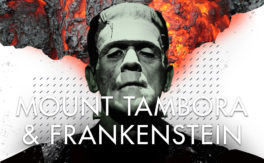The fun second life of fedoras.
The fedora hat was created sometime in the late 19th century. Its name comes from the title of the 1882 play Fédora, which starred Sarah Bernhardt. Interestingly, because of Bernhardt the hat was originally popular with women, only later becoming a staple of men’s fashion.
By the early 20th century, a time when basically all adults wore hats, the fedora was thee hat for men. Its popularity lasted up until the middle of the century when it faded out (for example President Kennedy famously broke with tradition and tended to not wear hats, unlike his predecessors). But with so many men were wearing so many fedoras, many of these hats took on second lives as hand-me-downs.

Jughead
As fathers gave their sons their beat up old fedoras, kids would modify them as an expression of their personalities. Old fedoras would be turned inside-out, the brim would be upturned and cut to create interesting patterns. Kids would further customize these creations with pins and other trinkets. These fun repurposed fedoras came to be known as whoopee caps.
By 1929, with the increasing popularity of whoopee caps, the Six Jumping Jacks released the song The Whoopee Hat Brigade. By the 1930s manufactured versions became available for sale – for those who didn’t want to go the DIY route. Whoopee caps spread to pop culture with two of the most famous whoopee cap wearers being Goober Pyle from The Andy Griffith Show, and Jughead Jones from Archie comics. Over time Jughead’s hat became so stylized it became more of a crown than a whoopee cap. Thanks to the 2017 Archie TV show Riverdale the Jughead whoopee cap has evolved again taking on more of a knit beanie style.
Added info: the name Fedora is the feminine version of the Russian name Fedor, which is the equivalent of the Greek Theodore, which means “gift of the gods”.





